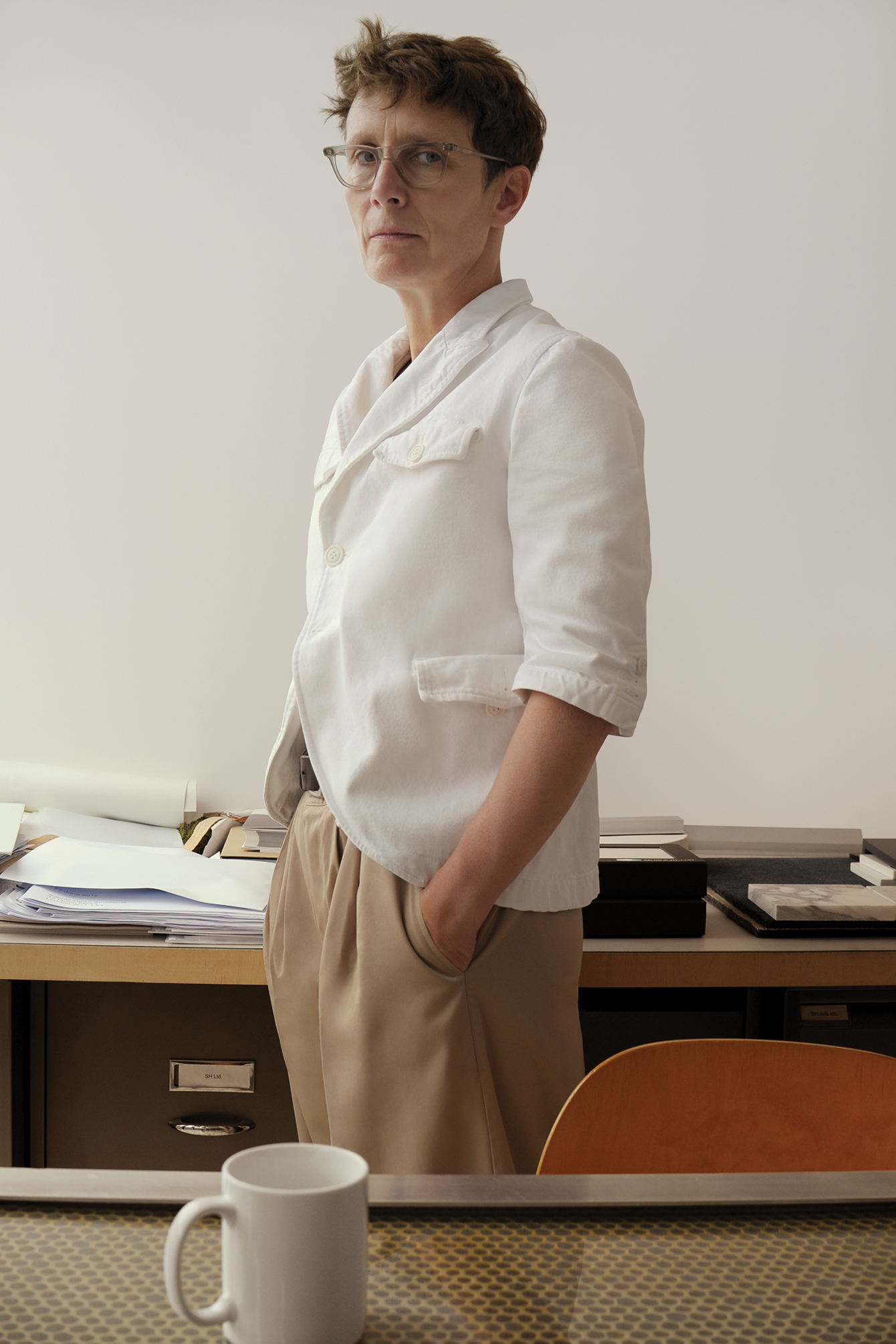“If you can Understand fashion, you can understand how not to follow it,” says London-based architect Sophie Hicks. Although she left her fashion career behind three decades ago, it has been following her ever since—sometimes to her detriment. “You don’t want, as an architect, to be in any way associated with fashion.”
It may sound like an odd statement from someone who is considered to be a style icon (her androgynous looks and style have landed her on an i.D. magazine cover and a Lanvin ad campaign) and is often referred to as “fashion’s architect,” but like many in her field, Hicks is concerned with the idea of permanence, whereas fashion is often anything but.

In her decade-long career as a fashion editor, first at Tatler and later at British Vogue, she has seen trends come and go few times around. The cyclical nature of the industry left her hanging up her editor’s hat to study at the Architectural Association School of Architecture in London. “I liked going to university as a more mature student,” says Hicks. “Although now, 26 doesn’t feel very mature, but at the time I felt ancient compared to the other students around me, who were all much younger.” But the age difference is not what set her apart from other students.
While studying, in a manner of six years, Hicks launched her own practice and had three children (her two daughters, Edie and Olympia Campbell, are both top models). Her knack for efficiency stems from her time spent in fashion. “When you’re an editor, you have to make decisions. And being able to make decisions is a great asset when you’re an architect.” It was only natural that the fashion houses quickly came calling when in need of new retail spaces.
Over the years, Sophie Hicks Architects has designed shops for the likes of Chloé, Paul Smith, and Yohji Yamamoto. “It’s quite a peculiar world, the fashion world, and you can’t really understand it if you haven’t been part of it,” she explains. And while she doesn’t keep up with seasonal trends, Hicks recognizes the rapid changes in how we consume fashion in the world of ecommerce. “The next person to ask me to do a store, I really will insist that we start from an Internet standpoint,” says the architect. “It’s so boring: a store with racks of clothes. It’s deadly dull in the world where we can summon everything on most screens.”
Although analog, her latest retail project, an Acne Studios store in Seoul (completed in 2015) is far from dull. With its monolith simplicity, the concrete lightbox acts as a peaceful haven in the bustling Gangnam neighbourhood. On the inside, a spiral concrete staircase adds a surprising softness to the brutalist space.
If Hicks was one of her buildings, she would probably be this one. In fact, most of them do resemble her in some way. “It’s not a coincidence at all. I tend to look quite reserved on the outside. I’m not a flamboyant dresser. When I wear clothes, I would say that I’m fairly unnoticeable, discreet. But it appears that they are noticeable,” she laughs. “I am known for having a style that’s distinctive.”
